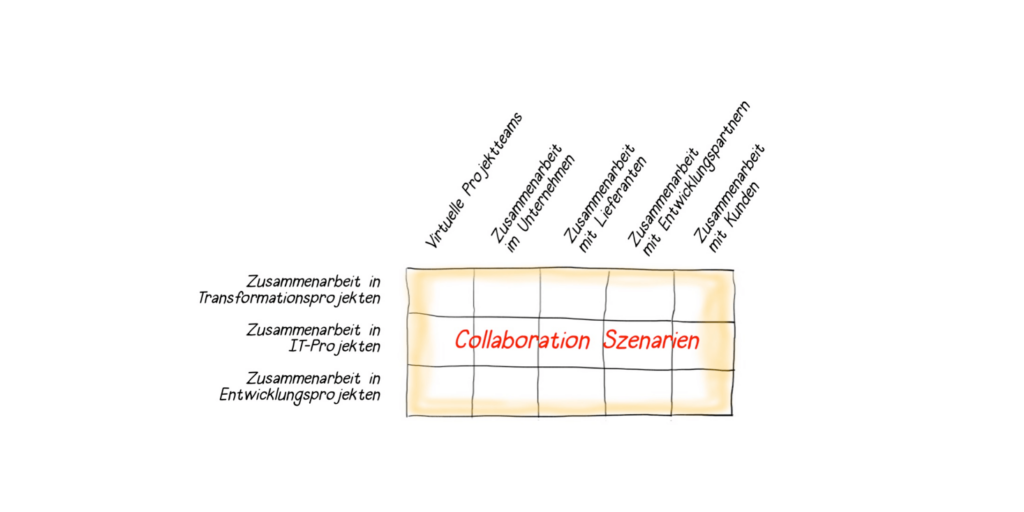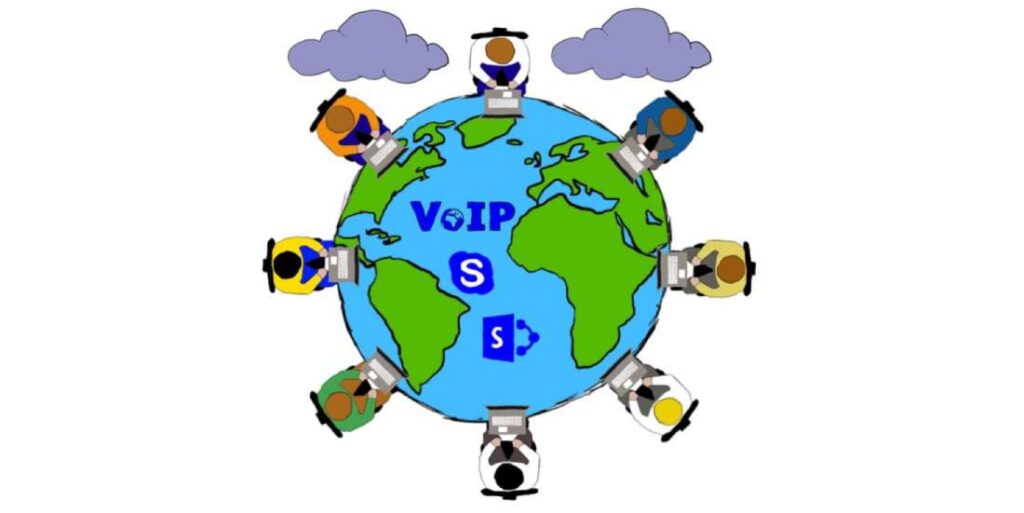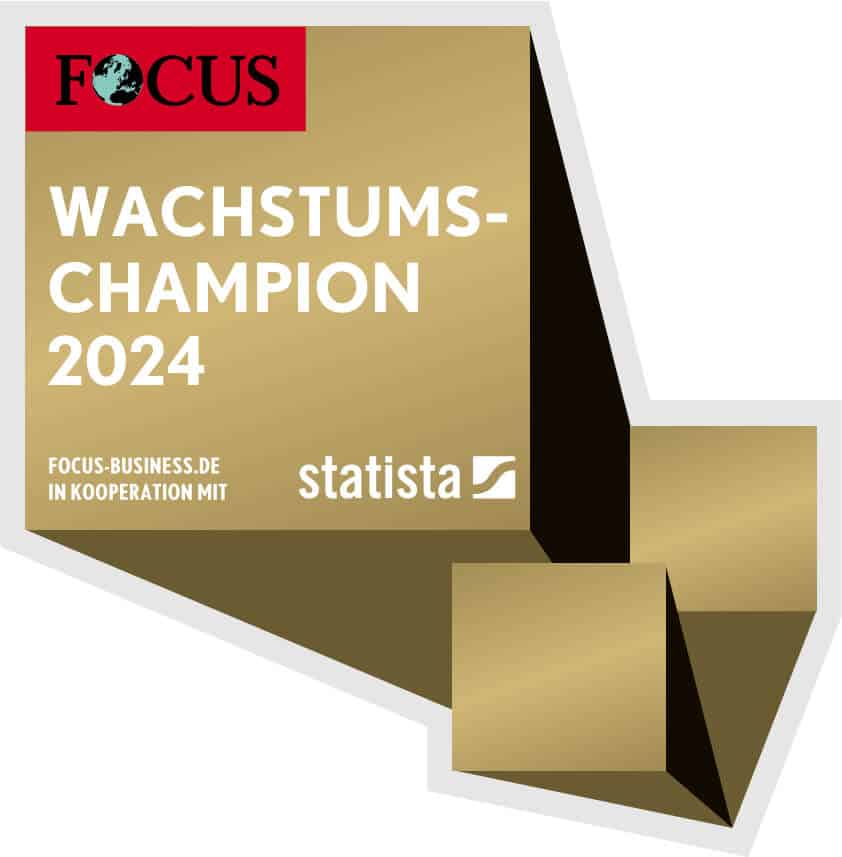Konnektivität ist einer der Mega-Trends der heutigen Zeit. Er bezeichnet die neue Organisation der Menschheit in Netzwerken. Einer der Teilaspekte dieser Konnektivität ist der Aspekt der Collaboration. Unter Collaboration versteht man heute die kooperative Zusammenarbeit eines Unternehmens mit seinen Kunden, Partnern und Lieferanten im Rahmen von unternehmensinternen und unternehmensübergreifenden Geschäftsprozessen. Collaboration ist damit ein Teil von „Digital Transformation“ beziehungsweise wird dadurch realisiert – und ist hat sich bereits als fester Bestandteil des Alltags etabliert. Dieser erste Teil unserer Beitragsreihe beleuchtet die Grundlagen der Collaboration, mit welchen Herausforderungen sie sich mit welchen Mitteln stellt und beantwortet die Frage, wie Sie eine erfolgreiche Collaboration sicherstellen.
Zusammenarbeit: Was Collaboration wirklich bedeutet
Als Grundpfeiler der Konnektivität umfasst die Collaboration die Kommunikation, den Austausch und die Verteilung von Daten und Informationen sowie deren gemeinsame Nutzung. Betroffen sind unter anderem das Supply Chain Management, das Supplier Relationship Management, das Customer Relationship Management und die unternehmensübergreifende Produktentwicklung. Collaboration nutzt moderne Kommunikationssoftware und -hardware und das Web 2.0, das heißt die interaktiven Elemente des Internets, und geht die nächsten Schritte in Richtung Industrie 4.0.
Ohne Collaboration ist die unternehmensübergreifende und auch die unternehmensinterne Zusammenarbeit im Zeitalter des Internets und der Globalisierung nicht mehr denkbar.
Das Thema wird in Unternehmen zum Teil immer noch stiefmütterlich behandelt beziehungsweise als gegeben hingenommen. Mitarbeiter, Kunden und Lieferanten arbeiten ja auch heute zusammen. Natürlich werden Internet-Bandbreiten ausgebaut, Telefonanlagen auf neue Technologien umgestellt und Computer mit der neuesten Collaboration-Anwendung ausgestattet, die große Softwareanbieter wie Microsoft oder Cisco den Unternehmen bereitstellen. Was aber oft fehlt, ist eine übergreifende, an Geschäftsprozessen ausgerichtete Collaboration-Strategie und Unterstützung derselbigen.
Wir wollen in dieser dreiteiligen Beitragsreihe die unterschiedlichen Collaboration-Szenarien vorstellen, den aktuellen Stand der Technik beleuchten und Ihnen veranschaulichen, wie man das Thema strategisch im Unternehmen angehen kann.
Arten der Kommunikation
Um sich dem Konzept der Collaboration zu nähern, muss zunächst klar sein, welche Kriterien die damit verbundene Kommunikation erfüllen muss. Grundsätzlich muss dabei zwischen synchroner und asynchroner Kommunikation unterschieden werden.
Synchrone Kommunikation
Der Begriff der synchronen Kommunikation wird unterschiedlich verwendet. Vornehmlich kommt er beispielsweise in der Informatik oder der Netzwerktechnik vor, bezeichnet aber auch die Kommunikation zwischen Personen. Bei Personen versteht man unter synchroner Kommunikation den direkten Austausch, also einen Informationsaustausch im direkten zeitlichen Zusammenhang. Beispiele für synchrone Kommunikation sind
- persönliche Gespräche
- Video- oder Telefongespräche
- Chats.
Asynchrone Kommunikation
Wird der Begriff der asynchronen Kommunikation in Bezug auf den Austausch zwischen Personen genutzt, so steht hier der Informationsfluss nicht im unmittelbaren zeitlichen Zusammenhang. Informationen werden abgegeben, ohne sofort eine Antwort oder Reaktion zu erhalten. Beispiele für asynchrone Kommunikation sind
- Brief
- SMS
- WhatApp-Nachrichten
- Diskussionsforen
- Unterhaltungen in Anwendungen (etwa Teams oder Yammer).
Verschiedene Collaboration-Szenarien
Im nächsten Schritt wollen wir die verschiedenen Collaboration-Szenarien in Unternehmen betrachten.

Das virtuelle Projektteam
Virtuelle Projektteams sind temporäre Teams, die örtlich und häufig auch zeitlich versetzt arbeiten. Sie umfassen meist Mitarbeiter unterschiedlicher Unternehmen und Selbständige. Oftmals sind die Mitglieder eines virtuellen Projektteams nicht im eigenen Büro, sondern geschäftlich unterwegs und müssen mobil mit anderen Teammitgliedern zusammenarbeiten.

In seinem Blog-Beitrag „Virtual teams: leading and working in agile times“ hat unser Kollege Thomas Riemann-Seibert kürzlich sehr anschaulich einige der Herausforderungen von virtuellen Projektteams beschrieben, wie zum Beispiel die Aspekte der Zeitzonen, der Kultur und der Sprache. Im Folgenden geht es um die konkreten Schnittstellen der Collaboration und anhand von welchen Erfolgskriterien sie umgesetzt werden muss.
Zusammenarbeit im eigenen Unternehmen
Im Zuge der Globalisierung haben viele Unternehmen Niederlassungen oder Tochterunternehmen auf der ganzen Welt gegründet. Längst sind davon nicht nur Großunternehmen betroffen: Auch immer mehr Mittelständler agieren global.
Dementsprechend haben einige Unternehmen ihre Organisationsstruktur so angepasst, dass Mitarbeiter einer Organisationseinheit auf verschiedene Standorte und Länder verteilt sind. So ist Jim in den USA ist nicht mehr über zig Hierarchieebenen von Stefan in Deutschland getrennt. Stattdessen arbeiten die beiden zusammen für denselben Vorgesetzten – trotz Zeitverschiebung und örtlicher Trennung.
In anderen Fällen sind bestimmte Abteilungen nicht an jedem Standort vertreten. Wenn nun beispielsweise die lokale Fachabteilung eine neue IT-Anwendung benötigt, so muss sie bei der Auswahl und Einführung häufig mit der IT-Abteilung an einem Standort oder sogar in einem anderen Land zusammenarbeiten.
Auch allgemein lässt sich beobachten, dass Mitarbeiter damit beginnen, die verbesserten Collaboration-Möglichkeiten für sich effektiv zu nutzen. Ein simples Beispiel dafür ist, dass sie an einzelnen Tagen auch mal aus dem Home-Office arbeiten.
Zusammenarbeit mit Lieferanten
Große Unternehmen haben auch ihre Lieferantenkommunikation optimiert: Sie bestimmen den Prozess für den Einkauf beziehungsweise die Vergabe und damit auch die eingesetzten Tools. Dokumente für Ausschreibungen und die spätere Projektarbeit müssen den Lieferanten zur Verfügung gestellt werden oder werden von diesen eingefordert. Die Abwicklung von Bestellungen soll möglichst einfach erfolgen. Der richtungsweisende Wunsch ist eine vollautomatisierte Bestellabwicklung über mehrere Organisationen und/oder Legal-Einheiten. Ein funktionierendes Beispiel ist Amazon: Die Bestellung erfolgt vom Kunden über Amazon und wird direkt zu den entsprechenden Lieferanten weitergeleitet. Aber auch im B2B-Geschäft nehmen derartige Marktplätze und ähnliche Plattformen zu.
Zusammenarbeit mit Entwicklungspartnern
Bei der Zusammenarbeit zwischen Entwicklungspartnern wird der größere Partner im Regelfall dem kleineren seine Prozessstrukturen und IT-Tools vorgeben. Viele Zusammenarbeiten erfolgen heute aber auch zwischen ähnlich großen Unternehmen. Automobilhersteller beispielsweise entwickeln gemeinsam Fahrzeuge oder entwickeln mit anderen Technologieanbietern neue Innovationen. Hier stellt sich die Frage nach den Prozessabläufen und Tools bei jeder neuen Zusammenarbeit erneut, denn unternehmensübergreifende Standards für derartige Kooperationen gibt es noch nicht.
Zusammenarbeit mit Kunden
In der Zeit, in der viele Geschäfte elektronisch abgeschlossen werden, ist es wichtig, den Kunden in die Collaboration mit einzubeziehen. Dies ist besonders wichtig, wenn der Kunde Beratung benötigt, um das richtige Produkt auszuwählen. Kunden, die es gewohnt sind, beim Kauf eines Produktes in einem Ladengeschäft oder durch einen Vertriebsmitarbeiter beraten zu werden, sind überfordert, wenn sie nun über das Internet buchen sollen. Häufig führt eine zu große Auswahl an Produkten sogar zur Verunsicherung des Kunden und zum Abbruch des Kaufvorgangs.
In dem Moment, in dem der Kunden geführt wird oder er die Möglichkeit hat, Fragen zu stellen, verbessert der Anbieter die Chance auf einen Geschäftsabschluss maßgeblich. Einige Unternehmen verfügen mittlerweile über Internetseiten und Webshops, bei denen dem Kunden nach ersten Aktivitäten, die auf Kaufinteresse hinweisen, ein Chat mit einem Vertriebsmitarbeiter angeboten wird.
Noch wichtig wird die Unterstützung des Kunden bei Produkten oder Leistungen, die erst noch kundenspezifisch konfiguriert werden müssen. Online-Konfiguratoren gibt es seit vielen Jahren – mittlerweile sind diese häufig um Funktionen zur 3D-Visualisierungs erweitert. Diese tragen dazu bei, dem Kunden einen besseren Eindruck vom Produkt zu vermitteln.
Wünscht der Kunde ein kundenindividuelles Produkt, so muss die Collaboration sogar die Möglichkeit der Spezifikation des Produktes einschließen. Der Vorteil hierbei ist, dass der Kunde schon sehr früh die Entscheidung für das Unternehmen trifft. Die Herausforderung für das Unternehmen liegt hingegen darin, den Kunden während des gesamten Prozesses optimal zu unterstützen.
Zusammenarbeit in Transformationsprojekten
Transformationsprojekte erfordern eine intensive Kommunikation. Die optimale Voraussetzung dafür ist das Arbeiten am selben Standort. Aber viele Transformationsprojekte werden durch Zusammenschlüsse und Carve-In-Projekte verursacht – national und international. Hier sitzen die Beteiligten an unterschiedlichen Standorten und müssen dennoch in den Transformationsprozess mit einbezogen werden; wenn man nicht ihren Widerstand gegen die Veränderung hervorrufen will. Eine effiziente Collaboration ist hier eine Grundvoraussetzung für das Gelingen der Transformation.
Zusammenarbeit in IT-Projekten
Es gibt kaum noch ein Projekt im IT-Bereich, dass ohne Collaboration auskommt. Das wird anhand von einem Beispielszenario besonders deutlich: Auf der einen Seite möchte sollen im Rahmen von Nearshore- und Offshore-Projekten günstige Entwicklungsressourcen aus Osteuropa und Indien eingebunden werden, auf der anderen Seite wird das Know-how eines Systemherstellers oder von Beratungsunternehmen benötigt. Die internen Kunden der IT-Lösungen wiederum arbeiten meist auf mehrere Standorte verteilt. Diese zahlreichen verschiedenen Blickwinkel machen klar: Je mehr Partner hier im Spiel sind, desto uneinheitlicher ist das Vorgehen, zum Beispiel bezüglich Konferenz-Tools und Dokumentablagen.
Conclusion
Collaboration ist aus unserem Arbeitsalltag nicht mehr wegzudenken. Jedes Unternehmen betreibt an unterschiedlichsten Stellen Collaboration – auch wenn in den meisten Unternehmen keine speziellen Projekte stattgefunden haben, das Unternehmen für diese Collaboration auch zu befähigen.
Im zweiten Teil unseres Beitrages werden wir auf die Collaboration-Technologien eingehen.
(Cover picture: © Patrick Müller)


